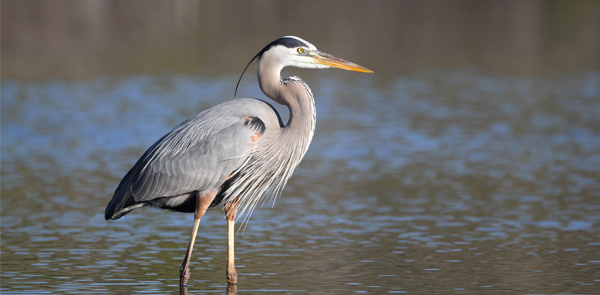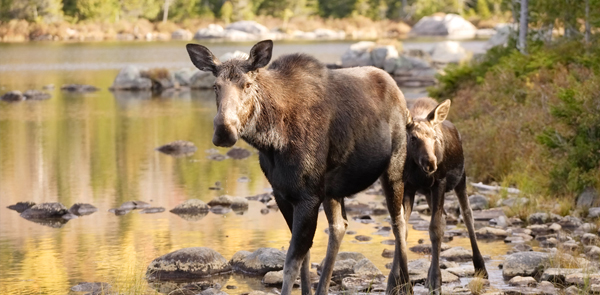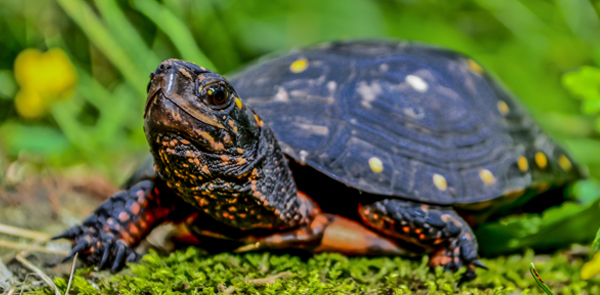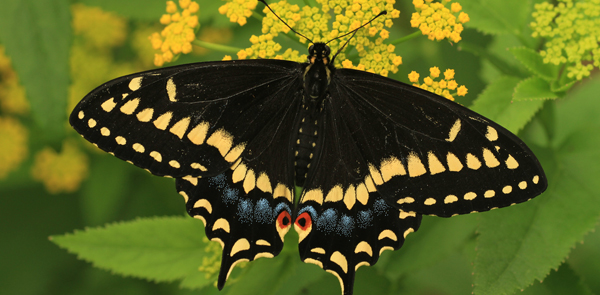Home → Fish & Wildlife → Wildlife → Species Information
Species Information
"The last word in ignorance is the man who says of an animal or plant, "What good is it?" If the land mechanism as a whole is good, then every part is good, whether we understand it or not. If the biota, in the course of aeons, has built something we like but do not understand, then who but a fool would discard seemingly useless parts? To keep every cog and wheel is the first precaution of intelligent tinkering."
Aldo Leopold (Round River, 1953, published posthumously
As humans, we do a lot of tinkering with our ecosystems – sometimes on purpose and sometimes by accident. These ecosystems and the natural resources that define them are a source of nourishment for our own species and a major part of our life support system.. The living parts of these systems are various plant and animal species. The big wildlife species, like moose and bear, are easy to identify as parts of our local wildlife fauna. The smaller invertebrates and microfauna in soils, water, and air also play crucial roles in ecosystem processes and functioning. Some of the services they provide include nutrient cycling, soil aeration, water purification, and pollination – they also feed the larger species. All species are "cogs and wheels" in our life support system, and as one can imagine, they often can be hard to track.
That is what MDIFW's Research and Assessment Section in Bangor does to help fulfill the Department's mission. We use various methods of research to assess Maine's diverse species of wildlife. What is it? Where is it? How many are there? What habitat features does it use or select? Is there any immediate threat? Is there a long-term threat? Can human or other impacts be mitigated? Is it in danger of local extinction now, and if so, how do we recover it, or, should we even bother to try? What is a suitable distribution and abundance of a species within the state? Is it abundant and productive enough to be harvested, and if so, how so?
From the top of Katahdin and on her side where we find the Roaring Brook mayfly – down to the west branch of the Penobscot where a wading moose feeds on a hot summer day – to the sandy beaches of southern Maine where a few nesting plovers run the gauntlet of beachgoers, dogs, ATVs, feral cats, and crows – it's a challenging task, but there are strategies for success. We try new technologies and methods when feasible. We constantly strive for cooperative efforts and efficient, measurable approaches to conservation, informed by the best available wildlife science. We depend on successful partnerships with volunteers, landowners, academics, private consultants, and other government agency biologists.
MDIFW has been a progressive agency with its formalized system for assessing species' status and incorporating public input into goals, objectives, and strategies that build the management systems for Maine's wildlife. There are, and may always be, shortfalls to the management systems and publicly-derived objectives. Some objectives go unmet, and more species information could almost always reduce uncertainties surrounding species conservation and management. We will continue to work with what we have, and we will continue to look for ways to do more with less, so that Mainers' unfilled and formal requests might be met in the future.
The links on this page will take you to a great deal of valuable information, photographs, and maps regarding the broad array of wildlife species that occupy the State of Maine and our efforts to protect and manage them for the public good. You can also find downloadable annual Research and Management Reports, Species Assessments, Species Management Systems, and other informative documents from the "Reports & Publications" section for later reading. If you are looking for other information, please let us know; we are here to serve you and Maine's wildlife heritage.



